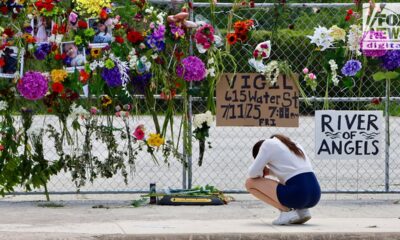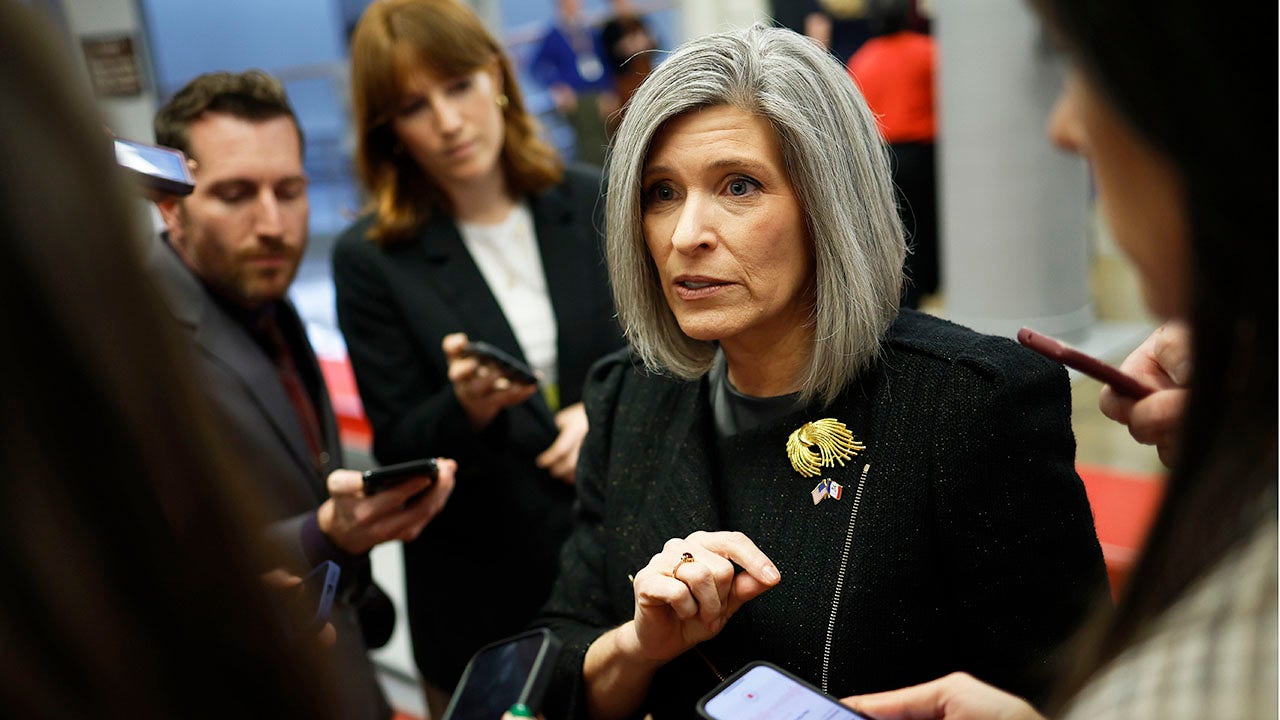World
What Sank the Bayesian Superyacht in Italy?

It all happened so fast.
Karsten Borner was planted on the halfdeck of his sailboat in the slanting rain. A grizzled mariner who had survived many storms, he was anchored in the same cove as Mr. Lynch’s yacht, at the same time, as the squall blew in during the early hours of Aug. 19.
Luckily, he was already awake. As the wind picked up, he and his crew scurried around closing hatches, clearing the decks and firing up the engines to keep his boat steady.
He couldn’t see much, but in flashes of lightning, he kept catching glimpses of Mr. Lynch’s long, sleek sloop bobbing behind him. It was only a few hundred feet away and its super-tall aluminum mast — one of the tallest ever made — was lit up with bright white lights, swaying in the wind.
Then he lost sight of it. The rain fell like gravel, drawing a curtain around his boat. When he looked up again, he was stunned. The Bayesian was disappearing, at a very odd angle, into the sea.
In the weeks since, Mr. Borner, who has sailed for more than half a century, still can’t believe the yacht sank in front of him. There weren’t any big waves that night, he said. Both boats were close to shore. His own sailboat — a converted tugboat built in East Germany 66 years ago — weathered the same squall just fine. And that other craft was a superyacht of the superrich, gleaming blue, 184 feet long and drawing stares wherever it went.
“It’s a mystery,” Mr. Borner said.
The seven victims of the Bayesian sinking, clockwise from top left: Hannah Lynch, Mike Lynch, Judy Bloomer, Jonathan Bloomer, Christopher Morvillo, Neda Nassiri and Recaldo Thomas.
via Agence France-Presse — Getty Images; via Reuters; Patrick McMullan, via Getty Images
That mystery has rippled around the globe as several investigations into the tragedy unfold. It has vexed maritime experts and compounded the grief of family and friends of the seven people who perished, including Mr. Lynch and his teenage daughter, Hannah, whose bodies were found trapped below deck.
The investigations turn on three central questions: Why did the Bayesian, which now lies 160 feet at the bottom of the Mediterranean, sink so fast? Did the yacht have any design flaws? Did the captain or crew make any fatal mistakes?
The Bayesian was a one-of-a-kind sailboat, built by Perini Navi, a famous Italian yacht maker. The company says the group of 10 superyachts that the Bayesian belonged to was “the most successful series of large sailing yachts ever conceived.”
But the Bayesian was different. Its original buyer — a Dutch businessman, not the Lynches — insisted on a single, striking mast that would be taller than just about any other mast in the world, according to the Italian yacht maker and three people with detailed knowledge of how this boat was built.
That decision resulted in major engineering consequences that ultimately left the boat significantly more vulnerable than many comparable superyachts, The Times investigation has found.
— More than a dozen naval architects, engineers and other experts consulted by The Times found glaring weaknesses in the Bayesian’s design that they said could have contributed to the disaster.
— Basic design choices, like the two tall doors on the side of the deck, increased the Bayesian’s chances of taking on dangerous amounts of water if high winds pushed the boat over toward its side, several naval architects said.
— Witness and survivor accounts revealed how this deadly sequence unfolded in real time: The yacht fell completely on its side and sank within minutes.
Sources: Perini Navi (technical drawing of the yacht) and New York Times reporting.
Seemingly small details on any boat — like how close air vents are to the waterline, or where a ship’s ballast is placed in the hull — might not sound decisive on their own. But when taken together, experts said, they appear to have compromised this vessel.
Such built-in vulnerabilities may not have been solely responsible for the yacht’s sinking, of course. The storm’s unexpected ferocity definitely played a part in the calamitous stew of events. Italian investigators are also looking hard at the actions of the Bayesian’s captain and crew.
Giovanni Costantino, the chief executive of the Italian Sea Group, the company that owns Perini Navi, said that when operated properly, the Bayesian was “unsinkable.” He maintains that the yacht was carefully engineered to survive bad storms, and he has put the blame for the tragedy squarely on the crew, accusing them of making a chain of fatal errors.
“I know, all the crew knows, that they did not do what they should have done,” he said. (Crew members have not revealed much, saying they are under a “gag order.”)
Mr. Costantino said the design was not at fault and that the towering mast, which stood 237 feet tall, had not created “any kind of problem.”
“The ship was an unsinkable ship,” he said. “I say it, I repeat it.”
The world of superyachts is incredibly opaque, the exclusive realm of some of the richest people on the planet, and exactly how these multimillion dollar boats are designed, approved and owned remain closely guarded secrets.
Making sure a superyacht is fit for the seas is a job left to a network of private companies and public agencies, and the Bayesian’s design was approved by the American Bureau of Shipping and the British Maritime and Coastguard Agency.
All the attention this tragedy has received could result in a closer look at yachting regulations. Several naval engineers in different countries who have gained access to the Bayesian’s documents say that as yachts have become more elaborate and subject to owners’ whims, others may be in danger as well.
The Bayesian’s technical documents show just how vulnerable it was. Even without major errors by the crew, the ship could have sunk in a storm that other boats survived, engineers say.
“We can look at it in hindsight and say they were in the wrong place at the wrong time. No, that’s not true,” said Tad Roberts, a Canadian naval architect who has nearly 40 years of experience designing boats, including superyachts.
“This boat had definite shortcomings that kind of uniquely made it vulnerable to what happened.”
The Victory Voyages
A cruise on the Bayesian was a voyage into luxury. The days were typically warm, sunny and calm, and finished off with plates of fresh langoustine and sumptuous chocolate. Hours would pass lounging on sun chairs, swimming in the sea or maybe taking out a kayak while the Bayesian crew, in branded polo shirts, watched vigilantly from the deck.
“It felt like a beautiful hotel that was floating on water,” remembers Abbie VanSickle, a New York Times reporter who was invited aboard in July because her husband, Jonathan Baum, was part of Mr. Lynch’s legal defense team.
Mr. Lynch had been acquitted in June in a criminal case in which he was accused of fraudulently inflating the value of his software company when he sold it to Hewlett-Packard for $11 billion. He could have been sent to prison for years. To celebrate his win — and his freedom — he asked friends and lawyers to cruise the Mediterranean with him.
Mr. Lynch seemed proud that his boat had one of the world’s tallest masts — a little booklet in her cabin even said as much, Ms. VanSickle remembered. Whenever they chugged into a harbor, she said, “people would take photos of it constantly because it was so crazy-looking in comparison to other boats.”
Most of the time, though, the Bayesian operated like a motorboat, powered by two enormous diesel engines. During her five-day voyage, Ms. VanSickle said they sailed only once, for just a few hours. But when they did, the boat moved through the water so smoothly, she said, it felt like they were “gliding.”
A promotional photo from Perini Navi of the Bayesian, which Mr. Lynch named after an 18th-century theory on probability.
EPA, via Shutterstock
A few weeks after Ms. VanSickle got off and returned to her life as a reporter in Washington, Mr. Lynch welcomed aboard his next batch of guests. This was the second celebratory voyage, beginning in mid-August, and Mr. Lynch had planned to get back to London, where he lived, around Aug. 20.
Among the 12 passengers were Mr. Lynch; his wife, Angela Bacares; their 18-year-old daughter, Hannah, who was soon off to Oxford; one of his lead lawyers, Chris Morvillo, and his wife, Neda Nassiri, who designed handcrafted jewelry; Jonathan Bloomer, an international banker and trusted adviser, and his wife, Judy, a psychotherapist celebrated for her charity work.
Mr. Lynch also invited some younger colleagues, including a couple who brought a baby on board. The crew was led by James Cutfield, an experienced New Zealand sailor, backed up by a first mate, a ship engineer, several deckhands and hostesses, totaling 10 in all.
Mr. Lynch was on the rebound, fired up about the possibility of starting a nonprofit to help exonerate people wrongly accused of crimes, said Sir David Davis, a friend and prominent conservative British politician.
Mr. Lynch sent Sir David a text message offering the choice of lunch or dinner in London on Aug. 22, when he was back.
An Unanticipated Storm
The Mediterranean Sea was flat on Aug. 18. But bad weather was moving south, from Naples toward Sicily. The Italian Air Force’s Meteomar forecast warned of scattered thunderstorms, gusts of wind and a rough sea. Several yacht captains said the weather warning was far from specific or extraordinary.
Mr. Borner, the captain who for decades has been running cruises and diving excursions on his old sailboat, the Sir Robert Baden Powell, was finishing up his own trip, picking his way west along the Sicilian coast.
The wind was blowing from the northwest and Mr. Borner figured that the curvature of Sicily’s rugged coastline at Porticello, a small fishing village built around a cove, would shelter him. He arrived in the cove that afternoon, went ashore with his guests and grabbed some pizza.
“It was a nice evening,” he remembered.
While they were in town, the Bayesian chugged into the same cove. It dropped anchor at 9:35 p.m., about a third of a mile from land. As Mr. Borner went to sleep around 11, the night was clear. The lights of the Bayesian’s mast glowed behind him.
Lights illuminating the mast of the Bayseian on Aug. 18.
Baia Santa Nicolicchia/Fabio La Bianca, via Reuters
At midnight on Aug. 19, the Italian Coast Guard put out a warning for a northwesterly Gale Force 8, a serious storm in which winds could reach 46 miles per hour. But the gale was predicted to hit hundreds of miles from Sicily.
Around 3 a.m., Mr. Borner woke up to help some of his passengers catch an early flight from Palermo, Sicily’s biggest city. But as the winds picked up rapidly, whipping the cove into a frothy chop, he scratched his plan to go ashore.
He and his crew shut the portholes and skylights and started the engine, to keep the bow pointed into the wind and prevent the boat from being hit on its side.
On the Bayesian, a young deckhand, Matthew Griffiths, later told the authorities that when the wind hit 20 knots, he woke up the captain, according to a person close to the crew (who said that neither of them was allowed to speak publicly). The captain then gave the order to wake up others, the person said.
At 3:51 a.m., the Bayesian started to drift — first 80 meters one way, then 80 meters another, its data transmitter shows. Maritime experts said this meant it was being blown around and probably dragging its anchor. It’s unclear whether the engines had been started.
At 4:02 a.m., a camera mounted on a boat in Porticello’s cove shows bright blue flashes of lightning. Three minutes later, another at a Porticello cafe captures the wind tearing down deck umbrellas. So much rain hits one of the cameras, it looks as if it’s being blasted with a hose.
Mr. Borner estimated that the wind gusts reached 60 knots, or nearly 70 miles an hour — just below hurricane strength — and said they had pushed his boat onto its side about 15 degrees, a serious lean but nothing close to capsizing.
Reports immediately after the disaster raised the possibility that the Bayesian had been hit by a tornado-like disturbance called a waterspout, but the authorities don’t think that happened. Still, the wind was doing something dangerous: It was changing direction.
According to a nearby weather station, it was blowing west-southwest then southwest, then north-northwest. This increased the chances of getting ambushed by a random gust that could slam into the side of a boat, which can tilt even a big vessel.
A third video shows the Bayesian rocking back and forth and beginning to lean. Then the lights on its giant mast blink out — all but the top one, which was powered by a battery.
By 4:06 a.m., the rain has turned into a blinding cascade. That same minute, the Bayesian’s location signal cuts out. Mr. Borner’s crew squinted through the nearly impenetrable haze of sea spray and rain and spotted a large object in the water. They first thought it was a reef.
“But I knew there was no reef,” Mr. Borner said.
It was the Bayesian, they now believe, knocked onto its side.
“Two Minutes” to Tragedy
At 4:34 a.m., a red emergency flare, bright as a meteor, shot into the sky. The storm had passed, and Mr. Borner and his first mate jumped into a small boat, zooming across the black water.
First they saw cushions floating. Then a flashing light. Then a life raft built for 12 packed with 15 people, bloodied and soaked to the skin, including a baby.
One person had a cut on the head, another on his chest. Some had already been bandaged. They were cold, wet and dazed. They were too shocked, Mr. Borner said, to say what happened.
As he loaded the survivors into his boat and began to head back to the Sir Robert, one woman pleaded with him not to leave.
“Please,” she told him. “Continue searching.”
Some people were still missing.
Mr. Borner decided to unload the survivors onto the Sir Robert, then send his small boat back. His crew gave them blankets and dry clothes. Some survivors were so shaken they needed to be led below deck by hand.
Nobody said much, Mr. Borner remembered.
One man told him: “I was the captain of this.”
Another said the boat had “sunk in two minutes.”
The woman who had begged him to keep searching sat huddled on the deck.
“Are you OK?” Mr. Borner asked her.
“No,” she replied. “I am not OK at all.’’
Capt. Karsten Borner, who rescued the survivors of the Bayesian.
Guglielmo Mangiapane/Reuters
Mr. Borner said he later realized it was Angela Bacares, wife of Mr. Lynch and mother of Hannah Lynch. Neither had made it onto the life raft. (Salamander Davoudi, a spokeswoman for Lynch family, told The Times that Ms. Bacares was not speaking to the media because she was grieving and wanted privacy.)
A few hours after, a string of ambulances arrived at Palermo’s main hospital. Dr. Domenico Cipolla, the head of pediatric emergency, evaluated the youngest survivor, a 1-year-old girl.
The baby was OK, Dr. Cipolla said, but she had experienced quite an ordeal. She and her mother had been sleeping on a sofa on deck because of the rough sea, Dr. Cipolla said, when the boat suddenly lurched and threw them to the deck.
A moment later the boat turned completely on its side, the baby’s father told the doctor, flipping his hand as he described it. The doctor said the mother told him that she and her baby were hurled into the water and that her baby nearly slipped away. But then she grabbed her and swam to a nearby life raft, which was designed to deploy automatically.
The parents were later identified as Charlotte Golunski, a colleague of Mr. Lynch, and James Emslie. Ms. Golunski did not respond to several messages left for her, and efforts to reach Mr. Emslie were unsuccessful.
Sources: Perini Navi (technical drawing of the yacht) and New York Times reporting.
Mistakes by the Crew?
The biggest question that investigators are focused on is how the Bayesian filled with water so fast. To many in the yachting world, it doesn’t make sense.
The boat had been built with several watertight compartments under the deck, to prevent water from spreading from one area to others. And it had been approved as safe by the Maritime and Coastguard Agency, part of Britain’s Department for Transport, and by the American Bureau of Shipping, a private company that reviews boat designs.
On top of that, one Italian official and underwater video footage broadcast on Italian television indicated that there were no holes or other structural damage visible in the hull.
Even so, the Bayesian, like many superyachts, had all kinds of openings in which water could theoretically get in: big air vents for the engines; smaller ones for the kitchen, crew quarters and guest cabins; large glass doors at the back and the sides so that people could walk onto the deck; and various hatches for crew and passenger access.
In interviews with Mr. Costantino, the chief executive of the Italian Sea Group, and his spokeswoman, the company accused the crew of leaving hatches open during the storm, including a doorway-size opening on the left rear of the hull, close to the water line. The spokeswoman claimed that hatch was the only place where so much water could have come gushing in.
The company speculated that the crew did not close a watertight door between this hatch and the engine room. A flooded engine room might explain the sudden blackout that killed the mast lights and then, a few minutes later, the location transmitter.
But witnesses, an Italian official familiar with the investigation and the underwater video challenged the company’s versions of events. The footage appeared to show the watertight door to the engine room closed, and the Italian official said the divers had not seen any open hatches on the hull.
Mr. Borner also said that after rescuing the captain, he asked him if he had shut the hatches. The captain said he had. Mr. Borner shared pictures taken by his guests a few moments before the Bayesian sank that appear to show that hull hatches were closed.
A Compromised Design?
The Bayesian’s origins go back to 2000. That year, Perini hired Ron Holland Design, a premier naval architectural firm, to design a series of 56-meter sailboats, said a person with knowledge of the timeline. As the superrich have become even richer, yachts have grown steadily bigger, and Perini was emerging as one of the world’s best-known builders of superyachts, often defined as motor yachts or sailboats longer than 24 meters, or 79 feet.
The Ron Holland firm, based in Ireland at the time, drew up plans for the hull, keel, rudder and, crucially, the placement of the masts — two masts. All other features, like the cabins, decks and vent system, were designed by Perini, according to the person, who did not want to be identified because of the possibility of legal action connected to the sinking.
In 2003, the first yacht in the series hit the water, the Burrasca (which means storm in Italian). Over the next four years, Perini built three more 56-meter superyachts from these blueprints, all with two masts. On Perini’s website, they look nearly identical.
Then came the Bayesian.
Construction on its hull began in 2005 at a shipyard in Tuzla, Turkey, according to the boat’s documents. But the original buyer for this yacht didn’t want the standard two-mast design. Instead, the Italian Sea Group said, he wanted the boat to be built with one large mast for better sailing performance.
That led to a radically different design, said three people with knowledge of what followed, and a cascade of modifications — some to accommodate the gigantic mast, and some apparently for stylistic or other reasons.
A promotional photo from Perini Navi showing the Bayesian’s mast and sails.
EPA, via Shutterstock
The most obvious departure from the previous Perini ships was the mast itself. Beyond being exceptionally tall — more than 40 feet higher than the original foremast — it was also very heavy, at least 24 tons of aluminum, possibly more. This alone would have challenged the boat’s stability, because so much weight was high above deck.
Since then, many yacht makers have switched to lighter, carbon-fiber masts.
“Technology moved on,” Mr. Costantino said.
Naval engineers pointed out that the heavier a yacht is up high, the more ballast it often needs down low — weight at the bottom of the boat to lower its center of gravity and resist its tendency to lean over.
Small notes on hull diagrams in the Bayesian’s documents show that the Turkish shipyard revised the ballast in July 2006, nearly 10 months after the keel was laid, which is one of the first steps of production.
“Values updated as from information by Yildiz,” the notes say in all caps, naming the shipyard.
But where this ballast was placed was curious, maritime experts said. Rather than spreading the ballast evenly across the bottom of the boat — which would have guaranteed the best stability — the builders stacked it toward the rear of the ship’s hull.
“When I first saw this, I couldn’t believe it,” said Mr. Roberts, the naval architect. “It made no sense to me.”
The ballast seems to have been pushed toward the rear of the boat to offset the single, heavy mast closer toward the front, Mr. Roberts concluded. He said he had never seen the main ballast used in such a design tactic before.
That was not the only change, experts said. A single mast would have plunged almost directly through the wheelhouse, an interior station where the ship can be controlled, so that was moved, too. A deck lounge was added, along with two tall doors on the sides. None of the other Perini yachts in the 56-meter series have these design elements.
Sources: Perini Navi (technical drawing of the yacht) and New York Times reporting.
The Bayesian sat lower in the water than other yachts in the same Perini series, said Stephen Edwards, the Bayesian’s captain from 2015 to 2020. Naval architects said this by itself would make it easier for water to pour through vents and other openings when the boat leans on its side.
Whenever a boat leans too far and water starts gushing in through open doors or vents, it can set off a dangerous downward spiral that is hard to stop and that can sink a boat in minutes.
Such risks are calculated and laid out in a lengthy, proprietary document — kind of a safety bible — for many vessels certified to ply the seas.
The Times has obtained that safety bible, called a stability book, for the Bayesian. Copies of the 88-page book are also sweeping through a global community of experts who are obsessively trying to solve the puzzle of how and why the boat sank. More than a dozen of those experts, including naval architects and engineers, found weaknesses in the Bayesian’s design that they said could have contributed to the disaster.
The stability book obtained by The Times was written before the Lynches bought the boat in 2014, when the yacht was called the Salute and owned by John Groenewoud, a Dutch businessman. In an email, he confirmed signing a contract for “the boat with 1 mast” in 2005, but declined to discuss any safety implications that may have had.
The Times obtained the stability book for another 56-meter Perini yacht, with two masts instead of one. A comparison of the boats showed that the Bayesian was significantly less stable.
Specifically, the data shows that the two-masted ship could lean at least 10 degrees farther onto its side before taking on dangerous amounts of water.
The documents also show that the Bayesian could begin taking on some water at angles that appeared to violate the safety threshold set by the British Maritime and Coastguard Agency.
The Italian Sea Group responded that the boat was in line with regulations and had been approved. When asked how that happened, an agency spokesman refused to clarify, citing the continuing investigations.
The other boat’s documents also showed that the sister yacht sat a little higher in the water than the Bayesian did, as Mr. Edwards emphasized. And under many circumstances, experts said, the sister ship had a better center of gravity and was more resistant to capsizing, two additional factors that would have made it safer.
“The other boat is, at least on paper, a better boat,” Mr. Roberts said.
To make boats safer, naval architects said they religiously ensured that vent openings are far from the water line. When showed a picture of a 56-meter Perini yacht that, like the Bayesian, had vents built into the hull, Philipp Luke, a Dutch naval architect, started violently shaking his head.
“No, no, no,” he said. “You don’t do that.”
In the end, several naval architects said, all these flaws may have come together at the worst time — in a sudden storm.
Two Spanish naval engineers, Guillermo Gefaell and Juan Manuel López, calculated that the sheer size of the Bayesian’s mast and rigging made the yacht a wind catcher, even with the sails down.
Writing for the Association of Naval and Ocean Engineers of Spain, they used a computer model to calculate what would have happened to the Bayesian if a strong gust of roughly 54 knots, around 62 mph, hit its side. Under those conditions, the Spanish engineers estimated, the Bayesian could lean dynamically and take on nearly a ton of water each second through an engine room vent.
In an interview, Mr. Gefaell noted that he, like almost everyone else, did not know everything that happened that night. But if the gusts were as strong as Mr. Borner estimated — 60 knots — the punch would have pushed the boat to an even more severe angle, his calculations showed, very quickly knocking the boat all the way over onto its side, as the witnesses recounted.
At that point, Mr. Gefaell said, “the boat was certainly lost.”
A Watery Maze
Within hours of the sinking, emergency divers plunged in. Their mission: Find survivors.
The Bayesian sat 160 feet below the surface, leaning on its right side on the seabed. The once-gleaming cabins were clogged with chairs, clothes, curtains and the enormous number of seat cushions that Ms. Bacares had brought onboard to make the boat more comfortable. The search was made even more difficult and dangerous, divers said, by the many mirrors installed below deck that now reflected back their lights in a disorienting, watery maze.
On the first day, divers found the body of the yacht’s chef, Recaldo Thomas, floating near the boat. Over the next three days, they found the bodies of Mr. Lynch and four other passengers in a small cabin near the foot of a narrow staircase leading down from the deck to the passenger’s quarters. Finally, divers discovered the body of the last missing person, Hannah Lynch, trapped behind furniture in a nearby cabin.
One Italian official said the six passengers might have been trying to climb the main guest staircase when a surge of water poured down the stairs and knocked them back into the cabins. With the boat flipped on its side, water gushing in, and total darkness, it would have been nearly impossible for anyone below deck to escape, experts said.
The Italian authorities plan to raise the wreck to inspect it more closely. That could take months. In the meantime, at least two major investigations are unfolding, one by Italian prosecutors and the other by the British Marine Accident Investigation Branch.
Rescue workers bringing the body of the final Bayesian victim to shore, in Porticello, Italy, on Aug. 23.
Igor Petyx/EPA, via Shutterstock
From the first weeks after the accident, Italian prosecutors said that Mr. Cutfield, the captain, and two of his crew were under investigation.
Mr. Cutfield hasn’t said a word publicly and did not respond to messages asking for comment. Several crew members, when approached at a hotel in Sicily in August, said they had all been put under a gag order. When asked who imposed it, they responded: “No comment.”
In the yachting world, Mr. Cutfield has some solid references. Turgay Ciner, a Turkish industrial magnate and sailing enthusiast, employed him to run his yacht for 12 years.
“He never made any mistakes,” Mr. Ciner said.
Mr. Ciner, speaking by phone from Istanbul, recounted a bad storm near Capri about 10 years ago that Mr. Cutfield handled. They were sailing on another 56-meter Perini yacht, the Melek, a two-masted boat in the same series as the Bayesian. He said that Mr. Cutfield performed very well and was “one out of a hundred.”
Why Mr. Cutfield left in a lifeboat with the other survivors when a half dozen passengers were still missing is a matter Italian prosecutors are looking into.
But several yacht captains have defended Mr. Cutfield, saying that whatever happened that night, it happened very quickly.
When a boat sinks fast, said Adam Hauck, an American yacht captain, there’s not much hope for anyone still onboard. The adage of the captain going down with the ship, he said, is antiquated and unrealistic.
“It’s not like a Titanic movie where you’re going through the water and you can just look in the rooms,” Mr. Hauck said. “At some point, you can’t go back for people.”

World
YouTube to start bringing back creators banned for COVID-19 and election misinformation
NEW YORK (AP) — YouTube will offer creators a way to rejoin the streaming platform if they were banned for violating COVID-19 and election misinformation policies that are no longer in effect, its parent company Alphabet said Tuesday.
In a letter submitted in response to subpoenas from the House Judiciary Committee, attorneys for Alphabet said the decision to bring back banned accounts reflected the company’s commitment to free speech. It said the company values conservative voices on its platform and recognizes their reach and important role in civic discourse.
“No matter the political atmosphere, YouTube will continue to enable free expression on its platform, particularly as it relates to issues subject to political debate,” the letter read.
The move is the latest in a cascade of content moderation rollbacks from tech companies, who cracked down on false information during the pandemic and after the 2020 election but have since faced pressure from President Donald Trump and other conservatives who argue they unlawfully stifled right-wing voices in the process.
It comes as tech CEOs, including Alphabet CEO Sundar Pichai, have sought a closer relationship with the Republican president, including through high-dollar donations to his campaign and attending events in Washington.
YouTube in 2023 phased out its policy to remove content that falsely claims the 2020 election, or other past U.S. presidential elections, were marred by “widespread fraud, errors or glitches.”
The platform in 2024 also retired its standalone COVID-19 content restrictions, allowing various treatments for the disease to be discussed. COVID-19 misinformation now falls under YouTube’s broader medical misinformation policy.
Among the creators who have been banned from YouTube under the now-expired policies are prominent conservative influencers, including Dan Bongino, who now serves as deputy director of the FBI. For people who make money on social media, access to monetization on YouTube can be significant, earning them large sums through ad revenue.
House Judiciary Committee Chairman Jim Jordan and other congressional Republicans have pressured tech companies to reverse content moderation policies created under former President Joe Biden and accused Biden’s administration of unfairly wielding its power over the companies to chill lawful online speech.
In Tuesday’s letter, Alphabet’s lawyers said senior Biden administration officials “conducted repeated and sustained outreach” to coerce the company to remove pandemic-related YouTube videos that did not violate company policies.
“It is unacceptable and wrong when any government, including the Biden Administration, attempts to dictate how the Company moderates content, and the Company has consistently fought against those efforts on First Amendment grounds,” the letter said.
Meta CEO Mark Zuckerberg has also accused the Biden administration of pressuring employees to inappropriately censor content during the COVID-19 pandemic. Elon Musk, the owner of the social platform X, has accused the FBI of illegally coercing Twitter before his tenure to suppress a story about Hunter Biden.
The Supreme Court last year sided with former President Joe Biden’s administration in a dispute with Republican-led states over how far the federal government can go to combat controversial social media posts on topics including COVID-19 and election security.
Asked for more information about the reinstatement process, a spokesperson for YouTube did not immediately respond to a request for comment.
World
Syria’s new president takes center stage at UNGA as concerns linger over terrorist past
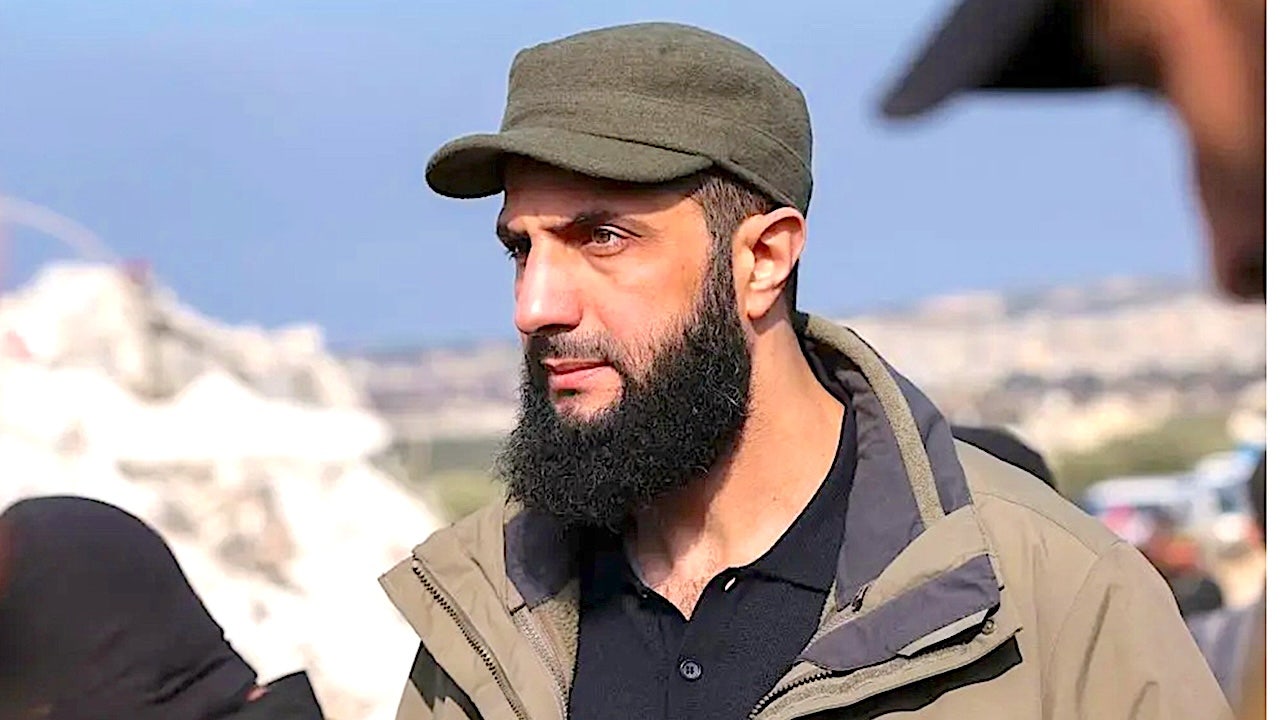
NEWYou can now listen to Fox News articles!
Once a member of al Qaeda and the Islamic State and now leading Syria’s fragile transition since toppling the Bashar Assad regime, Ahmed al-Sharaa is ready to take to the global center stage at the United Nations General Assembly Wednesday and make his case for a new path forward for his war-torn nation.
“This marks the first participation in high-level meetings of a Syrian president at the United Nations General Assembly since 1967, so this is a very big deal,” Natasha Hall, senior associate at the Center for Strategic and International Studies, told Fox News Digital.
“On such a historic occasion, what he will try to emphasize and underline is that this is a new day for Syria. They have overthrown the brutal dictatorship of the Assad regime. He will talk about the progress that’s been made and what more progress needs to happen in terms of recognition and the lifting of U.N. sanctions to help Syria move forward,” Hall added.
TRUMP’S MIDDLE EAST TOUR BEGINS WITH SYRIA LOOMING AS STRATEGIC OPPORTUNITY
Interim Syria President Ahmed al-Sharaa speaks during the Concordia Annual Summit in New York, Monday, Sept. 22, 2025. (Photo/Andres Kudacki)
A high-ranking Syrian government official confirmed to Fox News Digital that al-Sharaa will use the opportunity at the U.N. to present Syria’s vision for stability, reconstruction, and reconciliation.
“The most important issues he will raise include the need to lift all forms of unilateral sanctions that continue to hinder Syria’s recovery, the importance of combating terrorism in all its forms, the return of displaced Syrians and refugees, and the advancement of a genuinely inclusive political process rooted in the will of the Syrian people,” the Syrian official said.
Al-Sharaa, who led the Islamist rebel group Hay’at Tahrir al-Sham (HTS) to victory over Assad, ditched his military fatigues for a Western-style suit and has been on a charm offensive, hosting European and Western diplomats and politicians in hopes of bringing Syria out from its international pariah status.
The new Syrian leader received an unprecedented endorsement from President Donald Trump when the two met in Riyadh, Saudi Arabia, in May.
Trump called al-Sharaa a “young, attractive, tough guy,” announcing that the U.S. would lift sanctions in place since the Assad era and even discussed normalizing relations.
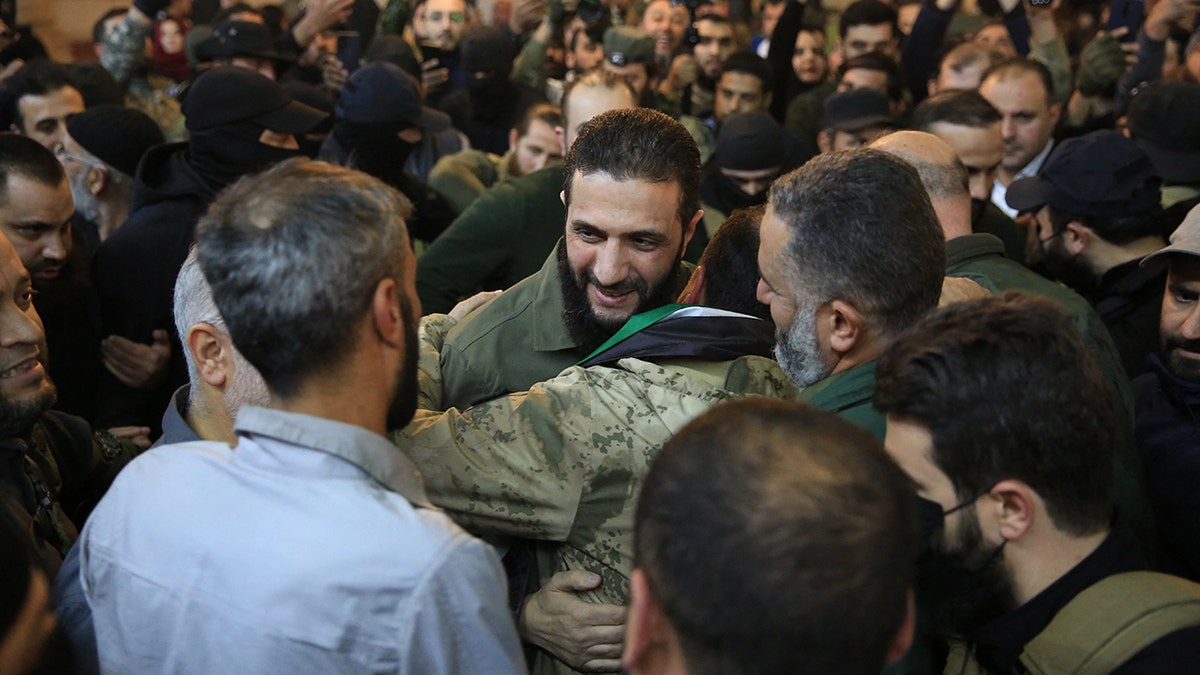
People welcome the leader of Syria’s Islamist Hayat Tahrir al-Sham (HTS) group that headed a lightning rebel offensive snatching Damascus from government control, Ahmed al-Sharaa (C), before his address at the capital’s landmark Umayyad Mosque on December 8, 2024. Al-Sharaa gave a speech as the crowd chanted “Allahu akbar (God is greatest),” in a video shared by the rebels on their Telegram channel showed. (Aref Tammawi/AFP via Getty Images)
Hall noted that al-Sharaa might be looking to secure a security pact between Israel and Syria along the UNGA sidelines, emphasizing that he seeks a Syria that is at peace with its neighbors and doesn’t want to position Syria to be a threat to any outside forces, particularly Israel.
He will also be looking to secure much-needed reconstruction aid to rebuild a country ravaged by 13 years of civil war. The cost for reconstruction is estimated to be between $250 and $400 billion, and 16.7 million people, or 75% of the population, are in dire need of humanitarian assistance, according to the U.N.
Since seizing Damascus, he has publicly said all the right things. He promised an inclusive government that would represent all religious and ethnic factions in Syria, uphold women’s rights and protect minority rights.
ISLAMIST GROUP RUNNING SYRIA HAS MIXED RECORD OVER GOVERNANCE IN PROVINCE, RULED WITH ‘IRON FIST’
Al-Sharaa also fulfilled promises to target ISIS and other terrorist groups operating in Syria. One month after taking power, Syrian security forces seized a shipment of heavy ammunition destined for Hezbollah in Lebanon, once a key ally of the Assad regime and Iran’s Axis of Resistance.
While optimism for a new Syria remains high, some caution it’s still too soon to judge al-Sharaa as a Western ally given his terrorist past.
“Al-Sharaa is not a democrat. He ruled Idlib without power-sharing. So far, in terms of control of vital government functions like security, foreign affairs, intelligence and justice, he has put loyalists in place,” former U.S. Ambassador to Syria Robert Ford told Fox News Digital.
Ford, who was the last U.S. ambassador in Damascus in 2011, said the crucial question is whether, over time, individual political and civil liberties will be respected and that people maintain, as they have now, the freedom to organize and protest.

Secretary of State Marco Rubio shakes hands with Syrian interim President Ahmad al-Sharaa at the Lotte New York Palace Hotel, on the sidelines of the 80th United Nations General Assembly at the United Nations headquarters, Monday, Sept. 22, 2025. (Bing Guan/Pool Photo via AP)
“Al-Sharaa’s heavy hand ruling Idlib prior to Assad’s fall has been lighter in Damascus, Aleppo and elsewhere. But so far, there is more political freedom to speak and protest in Syria than in many other countries in the region, such as Egypt, Algeria and some Gulf states,” Ford added.
Ambassador Barbara Leaf, who served as assistant secretary of State for Near Eastern Affairs, visited Damascus and met with Shara in December, becoming the highest-ranking official to meet with Syrian leadership since the outbreak of the Syrian civil war in 2011.
Leaf, a distinguished diplomatic fellow with the Middle East Institute, told Fox News Digital about her initial contact with Shara right after HTS overthrew Assad. Her mission was to get eyes on him, to assess him and to send a clear signal on U.S. expectations if he was going to lead a new Syria.
“My takeaway from the meeting was that he came across as somebody who was very well-prepared for the discussion. He had clearly anticipated all of the topics that I raised and he had pretty thoughtful responses with a readiness to engage,” she said.

Syrian security forces walk together along a street, after clashes between Syrian government troops and local Druze fighters resumed in the southern Druze city of Sweida early on Wednesday, collapsing a ceasefire announced just hours earlier that aimed to put an end to days of deadly sectarian bloodshed, in Sweida, Syria, July 16, 2025. (Karam al-Masri/Reuters)
Al-Sharaa made a point several times to say that Syria would no longer be a threat or a staging point for threats against its neighbors, including Israel, and that he would not allow the Iranians, Hezbollah or Palestinian groups, to use Syrian territory to conduct terrorist activities, the ambassador said.
“I came to the sense that he was already making a shift from being a military commander to being a politician, to being a political leader,” Ambassador Leaf noted.
While Ambassador Leaf highlighted his pragmatism, his true intentions as the new leader of Syria remain murky.
The ambassador said that it appears al-Sharaa has traveled a trajectory away from his jihadist terrorist past, but it remains a question how far he is willing to go to effectuate what she believes is an intention to form an Islamist style of governance.
CHRISTIAN WATCH GROUP RISES UP TO PROTECT COMMUNITY AMID GROWING VIOLENCE IN SYRIA
“Does he want to formulate a kind of Islamist governance, conservative governance and social order that, frankly, Syria has not seen? And would he be willing to use force to get there? That’s an unknown,” the ambassador cautioned.
What’s concerning for Ambassador Leaf and others is that many of the people serving in key roles in the transitional government are close associates of al-Sharaa and others affiliated with HTS and other allied armed rebel groups.
“Al-Sharaa is still engaged in a careful balancing act within his own government between liberal opposition voices, former regime bureaucrats and more Islamist proponents aligned still with HTS’ mission and principles,” Caroline Rose, director of The New Lines Institute, told Fox News Digital.
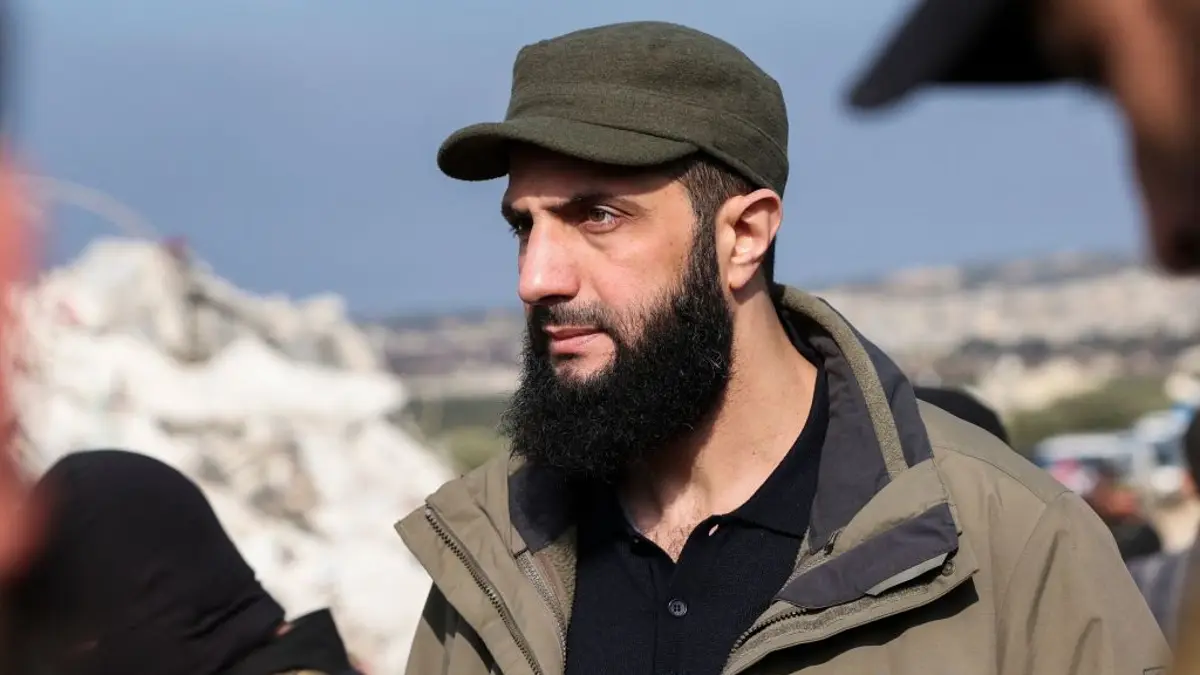
Ahmed al-Sharaa, once known by his nom de guerre Abu Mohammed al-Jolani, is seen in Syria Feb. 7, 2023. Since becoming the country’s president, he has gone back to his given name. (Omar Haj Kadour/AFP via Getty Images)
EVANGELICAL LEADER SAYS US MUST PROTECT SYRIAN CHRISTIANS FROM ATTACKS BY JIHADI TERRORISTS
Rose, who traveled to Syria earlier this year, said that Syria’s complex political dynamics have led not only to gridlock, but even incapacity in times of crisis, “such as failure to rein in radical Sunni fighters during violent outbreaks in Latakia and Suwayda, but also policies appeasing more conservative elements of al-Sharaa’s support network, such as the ruling requiring full-body swimwear at Syrian pools and beaches.”
While Syria’s new government has looked to consolidate control over a restive society, Shara’s forces had to manage a fragile society divided along ethnic and religious lines.
Syria has experienced a wave of sectarian violence since the revolution to overthrow Assad. Government security forces retaliated after forces loyal to the Assad regime launched an attack in the coastal city of Latakia, Assad’s hometown. In total, around 1,400 people, mostly civilians, were massacred, according to the U.N. Most of the victims from the Alawites, a minority group in Syria, which the Assad family belonged to, as well as from the Druze community.
It was the worst episode of violence since the overthrow of Assad in December 2024.
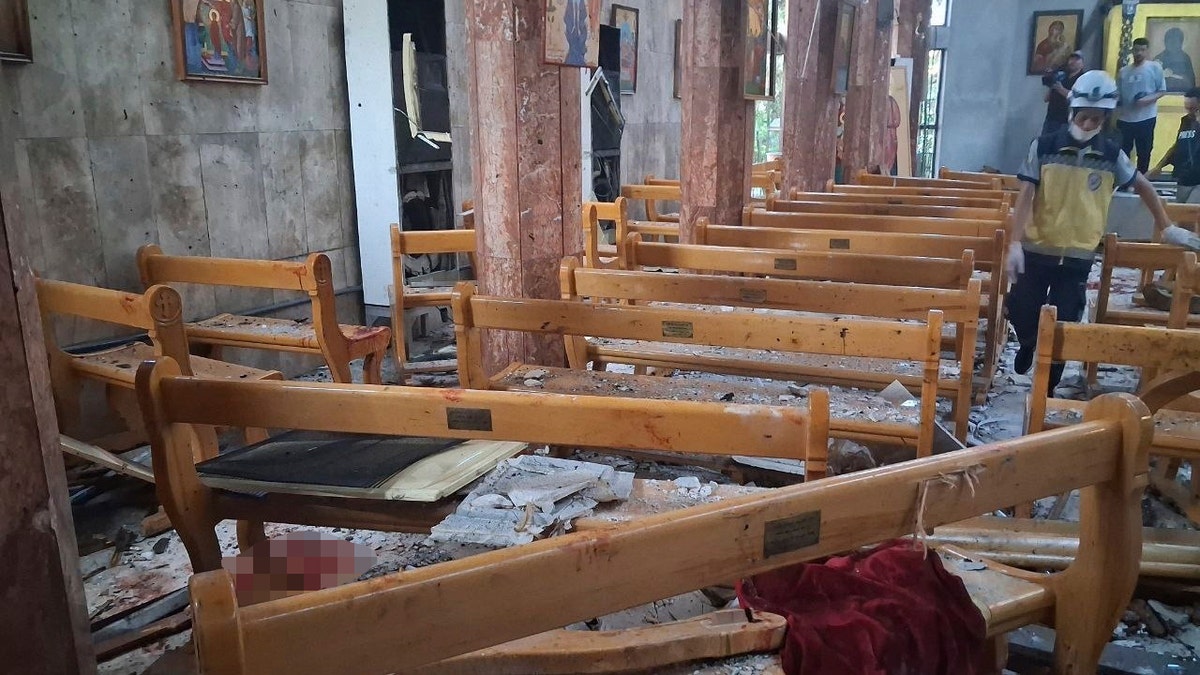
In this photo released by the Syrian official news agency SANA, a Civil Defense worker inspects the damage inside Mar Elias church where a suicide bomber detonated himself in Dweil’a on the outskirts of Damascus, Syria, Sunday, June 22, 2025. (SANA via AP)
Clashes between Bedouin tribes, Druze militias and government forces in Suweida led to hundreds of deaths and drew in Israeli military intervention — to protect Syria’s Druze minority. A ceasefire was eventually agreed to but the spiraling ethnic violence highlights Syria’s rocky transition.
The country’s dwindling Christian community has also felt the brunt of extremist violence. In June, the Islamic State was suspected of carrying out a deadly suicide bombing at a Greek Orthodox church in Syria, which killed 22 worshipers and injured 63 others. Christians have also been attacked and, in some cases, killed, allegedly by forces tied to the al-Sharaa government.
The new authorities will also have to incorporate Kurdish forces operating in Northeast Syria, where the Syrian Democratic Forces have been crucial to the U.S.-led counter-ISIS campaign. Any disruptions in the merging of the SDF into the Syrian state raises the risk of an ISIS resurgence.
World
Palestine as a state – what would that actually look like?
For a Palestinian state to be internationally recognised and built, Israel’s current government would need to halt its relentless opposition to Palestinian statehood and Israel’s main ally, the United States, would need to agree on a two-state solution, which it no longer does.
-

 Finance1 week ago
Finance1 week agoReimagining Finance: Derek Kudsee on Coda’s AI-Powered Future
-

 World6 days ago
World6 days agoSyria’s new president takes center stage at UNGA as concerns linger over terrorist past
-
North Dakota1 week ago
Board approves Brent Sanford as new ‘commissioner’ of North Dakota University System
-

 Technology6 days ago
Technology6 days agoThese earbuds include a tiny wired microphone you can hold
-

 Culture6 days ago
Culture6 days agoTest Your Memory of These Classic Books for Young Readers
-

 Crypto6 days ago
Crypto6 days agoTexas brothers charged in cryptocurrency kidnapping, robbery in MN
-

 Crypto1 week ago
Crypto1 week agoEU Enforcers Arrest 5 Over €100M Cryptocurrency Scam – Law360
-
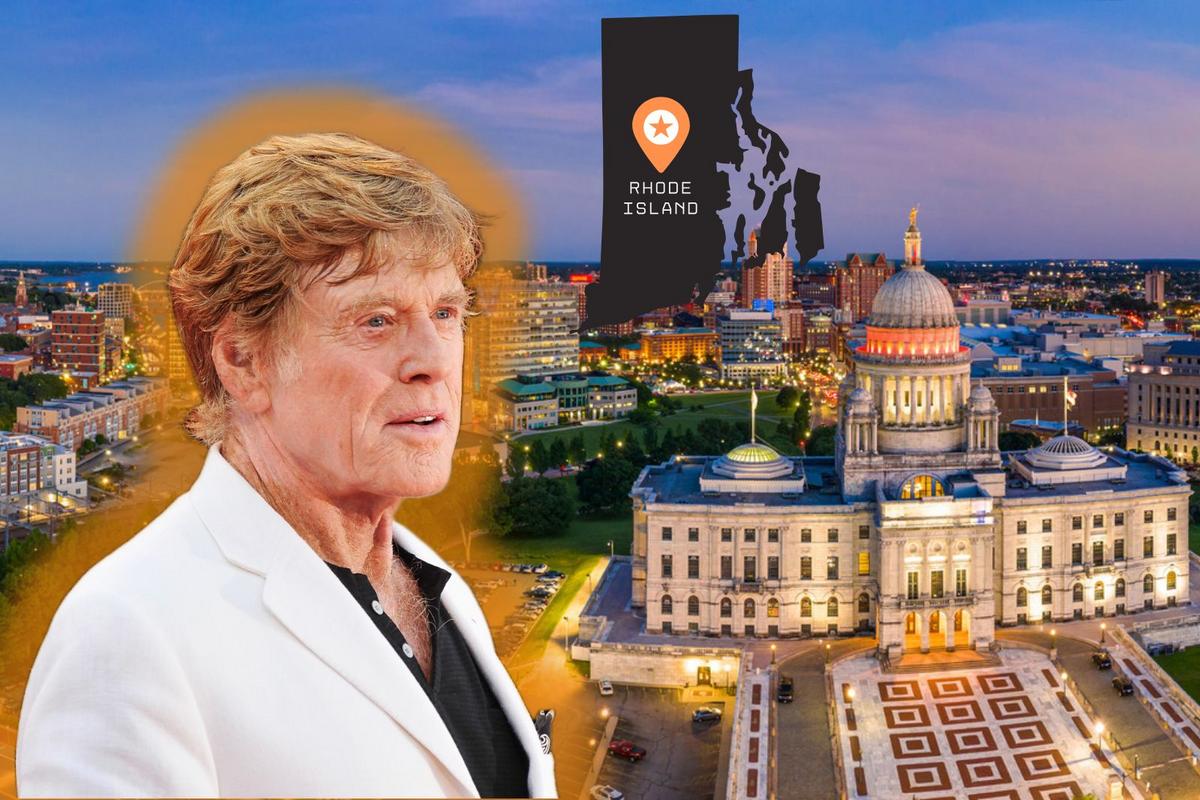
 Rhode Island1 week ago
Rhode Island1 week agoThe Ocean State’s Bond With Robert Redford
